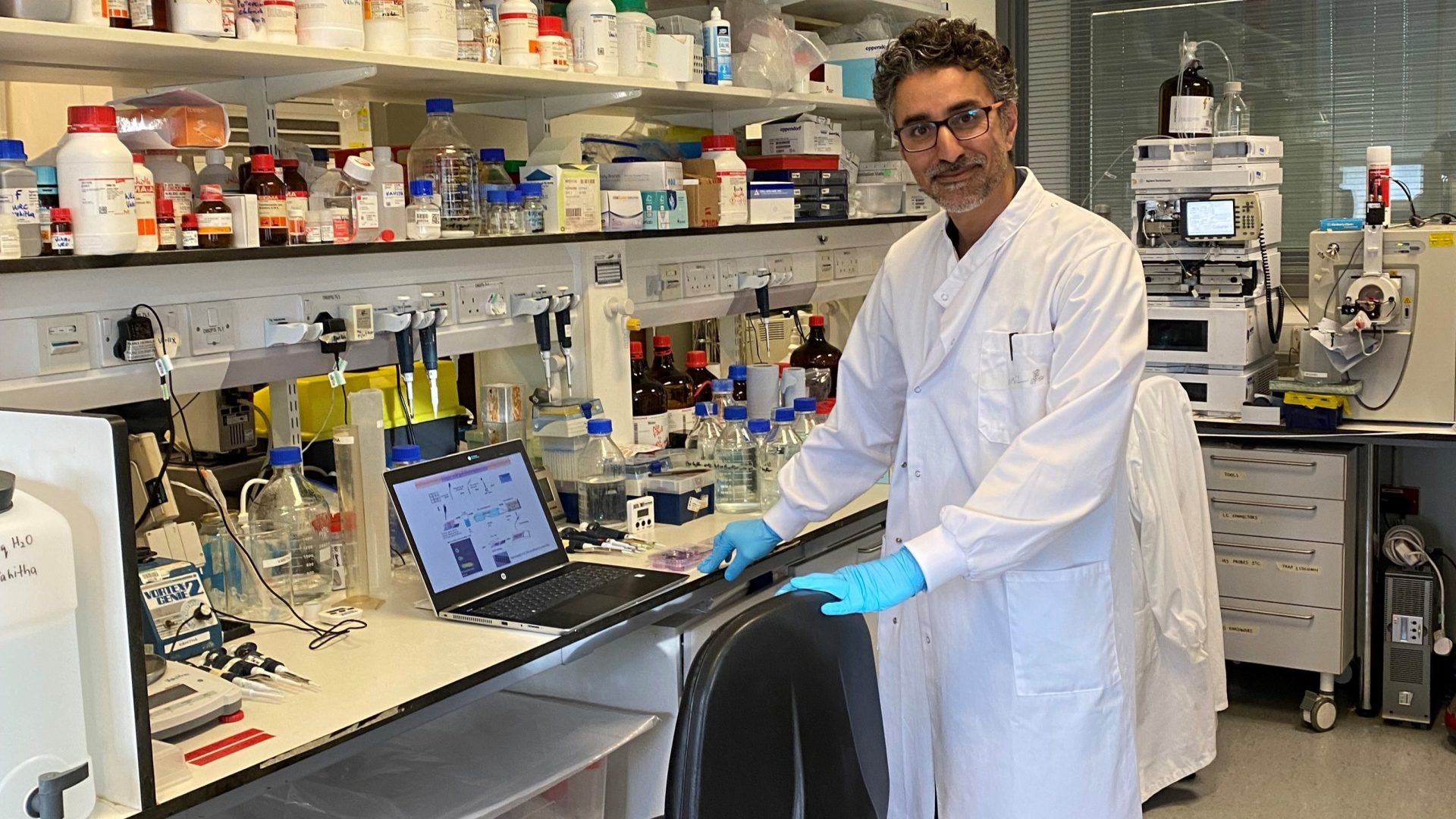A pioneering new UK knowledge transfer research project has been launched to examine the impact of microplastics on human health as a crucial forerunner to the regulatory powers needed to tackle plastic’s presence in our food and drinking water.
Leading the project is Dr Nabil Hajji, Technical Director of Toxicology at the Water Research Centre (WRc), an RSK Group company. WRc is working with Queen Mary University of London on the 24-month Knowledge Transfer Partnership project which is funded by Innovate UK.
Dr Hajji said: “The fact that microplastics are present in seafood and our marine environment is well-documented, along with the toxicity concerns associated with this. However, the deeper understanding of the potential risks that this material presents to human health has been lacking.
“The World Health Organisation (WHO) and the EU Commission have emphasised these knowledge gaps and urged the scientific community to investigate this further. Understanding how the toxicity of microplastics impacts on our health is the first step to putting regulatory measures in place to protect people from any risks we identify.”
He explained that the need to understand the impact of microplastics and establish a new and accurate risk assessment to empower and influence regulatory powers was both essential and time sensitive.
“Plastic pollution is expected to more than double by 2030 with some 40% of plastic recognised as a single use material remaining persistent in the environment. In addition, as it is degraded over time, it creates microplastics (less than 5mm) and nanoplastics (less than 0.1mm) – this is the substance being ingested by animals and people.”
WRc notes that several thousand chemicals are associated with plastic, including distinct additives, plasticisers, pigments, antimicrobial agents, heat stabilisers, UV stabilisers, fillers, and flame retardants.
Dr Hajji said: “Until we develop a risk assessment, we lack the sound scientific knowledge to empower our regulators. The UK Committee on Toxicity of Chemicals in Food, Consumer Products, and the Environment (COT) has also echoed this concern. It recommends research prioritises a risk assessment for microplastics by establishing standardised methods for the quantification of different microplastics in various food sources (including water), and gathering information on absorption and accumulation, as well as profiling related toxicities.”
He said the project will see WRc use a chemical imaging system, incorporating quantum laser technology, to identify and classify the chemicals presents in the microplastics. This will identify chemicals that can impact key pathways of human disease.
“The risk to human health will be tested in relevant human tissue and in silico (computer) models as recommended by the Organisation for Economic Co-operation and Development. At Queen Mary University of London we will perform a nanolitre-scale (one billionth of a litre) analysis for microplastic biomarkers for toxicity.
“The combined risk assessment and toxicology testing will be the first-of-its-kind for the development of a microplastic risk assessment consulting service in the UK. Methods developed as part of this work will be validated and recommended to the Organisation for Economic Co-operation and Development to create global standard protocols for microplastic risk assessment.”
Dr Vahitha Abdul Salam, the lead researcher from William Harvey Research Institute, Queen Mary University of London, said: “In partnership with WRc, the project offers an exciting opportunity to transfer knowledge and relevant skills to develop a comprehensive microplastic risk assessment tool that will deliver far-reaching impacts in identifying microplastic effect on human health, supporting water quality controls and guiding plastic and recycling manufacturers to safeguarding public health.”
Innovate UK KTN Senior Knowledge Transfer Adviser Dr Lorna Howarth said: “This is a trail blazing knowledge transfer project that will embed a new commercial risk assessment capability into WRc using a novel methodology and approach that has not been taken before. The outcome will far reaching economic, environmental and societal impacts”.
Dr Hajji added that WRc had successfully secured the vital cutting-edge equipment and personnel to deliver the project. “We are also creating a new toxicology laboratory at WRc Swindon to enable further research and development. Over the next two years we will be developing our methodology to enhance, standardise and tailor the risk assessment so that it can be applied to different microplastic contamination across different environments.”



